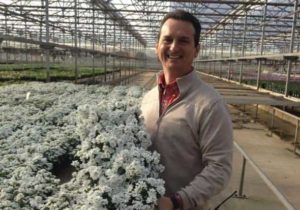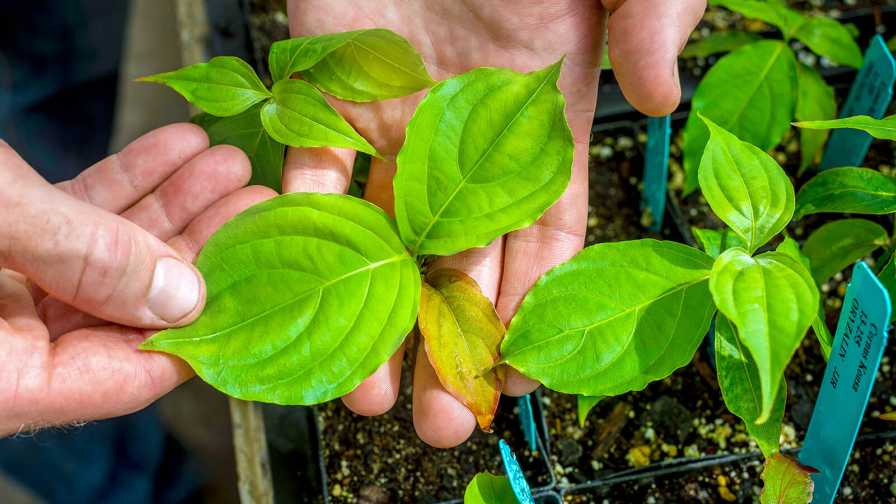Top 100 Greenhouse Growers Talk About PGRs
Using plant growth regulators (PGRs) to influence plant growth can be a tricky business. Who better to ask than two expert-level growers who know the ins and outs of growing quality plants? Steve Garvey is Head Grower at Dallas Johnson Greenhouses (No. 13 on Greenhouse Grower’s Top 100 Growers list) in Council Bluffs, IA, and was a finalist for Greenhouse Grower’sSM Head Grower of the Year award in 2017, as well as winner of the Excellence in Quality Award that same year.
Ivan Tchakarov is Director of Growing at Metrolina Greenhouses (No. 5 on the Top 100 Growers list) in Huntersville, NC, and Greenhouse Grower’s 2014 Head Grower of the Year. With their years of growing experience, it only made sense to ask them to share some of their wisdom about how to use PGRs successfully.
Pay Attention to Timing
Metrolina Greenhouses grows more than 2,600 different species and colors of plants. Most of them require a different approach to control size, timing, flowering, appearance, and longevity before they are delivered to the customer. Growers at Metrolina have three goals for their crops — have the right spec, the right timing, and the right plants for the consumer. All these objectives come with very precise execution of plant-growing protocols, which vary widely based on time of year and crop grown.
Metrolina’s growers underwent a learning curve before they reached their goal of getting PGR use right every time, all the time, Tchakarov says. He shared four things he has learned over the years about PGRs.
Don’t overdo it or be impatient. Let the chemistry do its thing and don’t come back and reapply too soon.

Ivan Tchakarov, Metrolina Greenhouses
Don’t procrastinate (putting it off till tomorrow). There is no tomorrow in plug production. There are two to three days in annual finish production and three to five days in perennial production to react; after that, it is too late (starting to compromise product, etc.).
Apply the correct rate (don’t miscalculate).
Time your applications right (hot and sunny versus cloudy and rainy). Some chemistry stays longer (needs more contact time), and some chemistry cannot be applied when it is warm or at high light levels.
Finally, Metrolina has three pillars it follows each season that are good advice for growers.
Know your plants and learn how they respond by testing first on a few trays/plants.
Repeat the trial at least twice before making a product part of your program.
For every season there is a different rate, so learn it first.
Learn When Not to Apply
Dallas Johnson Greenhouses produces a range of potted annuals each year, and the finish timing is critical to maintain the plant quality its customers have come to expect. Garvey recommends using PGRs and fertility management together to guide growth.
“Most growers think about feeding and pushing the plant and then use a PGR to stop all that they have put into the plant,” Garvey says. “I like to feed right after a PGR application and use it to help build the plant rather than shut it down and possibly delay flowering.”
Learning when not to apply PGRs is equal in importance to learning when to apply them. Overregulating a plant and then spraying it with something else to turn it around is not a good practice, according to Garvey, who says a quality grower should be able to read that plant, and along with the ready date, weather, and season be able to decide to skip an application or cycle the plant harder.

Steve Garvey, Dallas Johnson Greenhouses
“A grower should never forget to use non-chemical and environmental growing practices, along with a carefully timed PGR application, to achieve a quality finished plant,” he says.
Garvey remembers a time when he drenched a certain chemical (which he now loves) on a run of geraniums that probably never bloomed. He drenched the geraniums at a 4 ppm rate because he did not check his boom job program properly.
“It happens, but a good grower doesn’t let it happen again,” he says. “A good rule of thumb is to use lower rates of PGR if you are in doubt because you can’t take it out of the plant (or you should not want to spray another PGR to counter another), but you can always apply again.”










